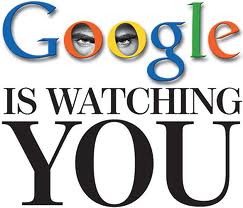Google Penguin Update: Hidden Text And Links

There’s been a lot of discussion about Google’s Penguin update since it was launched. The update, if you haven’t been following, is about decreasing the rankings of sites that are violating Google’s quality guidelines. With that in mind, it seems like a good idea to take a good look at these guidelines.
Here are some articles about:
Cloaking
Get Better At Links
Keyword Stuffing
The guidelines have been around for a long time, and Google has enforced them for just as long. In that regard, the Penguin update is nothing new. It’s just that Google thinks it has a new way to better enforce the guidelines. You should expect that Google will only continue to improve, so your best bet is to simply abide. That is, if you care about your Google rankings.
 Another one of Google’s guidelines is: Avoid hidden text or hidden links. This means, don’t use white text on a white background. It means don’t include text behind images. Don’t use CSS to hide text. Don’t set the font size to 0. These are specific examples of what not to do straight from Google’s help center page on the topic. When you do these things, Google is deeming your site untrustworthy, and will go out of its way not to rank your site well or most likely de-index it completely.
Another one of Google’s guidelines is: Avoid hidden text or hidden links. This means, don’t use white text on a white background. It means don’t include text behind images. Don’t use CSS to hide text. Don’t set the font size to 0. These are specific examples of what not to do straight from Google’s help center page on the topic. When you do these things, Google is deeming your site untrustworthy, and will go out of its way not to rank your site well or most likely de-index it completely.
[custom_frame_center shadow=”on”][/custom_frame_center]
“If your site is perceived to contain hidden text and links that are deceptive in intent, your site may be removed from the Google index, and will not appear in search results pages,” Google says. “When evaluating your site to see if it includes hidden text or links, look for anything that’s not easily viewable by visitors of your site. Are any text or links there solely for search engines rather than visitors?”
Google defines hidden links as that are only intended to be crawled by Googlebot, but are unreadable to humans, because they consist of hidden text, CSS has been used to make them as small as one pixel high, or it is hidden in a small character (such as a hyphen in the middle of a paragraph).
[custom_frame_center shadow=”on”][/custom_frame_center]
“If you’re using text to try to describe something search engines can’t access – for example, Javascript, images, or Flash files – remember that many human visitors using screen readers, mobile browsers, browsers without plug-ins, and slow connections will not be able to view that content either,” Google says. “Using descriptive text for these items will improve the accessibility of your site. You can test accessibility by turning off Javascript, Flash, and images in your browser, or by using a text-only browser such as Lynx.”
Probably the best takeaway from Google’s advice on hidden text and links is that you should either remove them or make them more easily viewable (in the case that they’re actually relevant).

